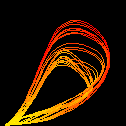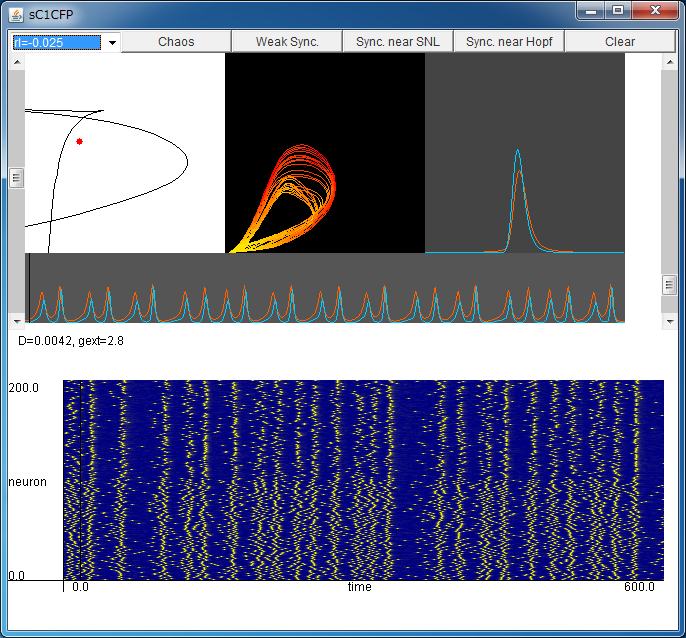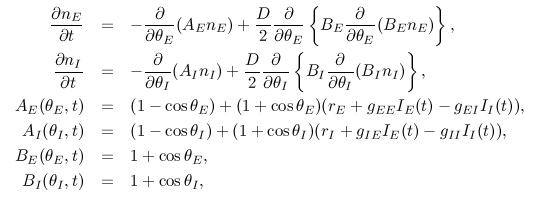 |
Parameter Setting
|
By clicking your mouse in this field, you can change the noise intensity D (horizontal axis) and the external coupling strength gext (vertical axis).
Synchronized firings and chaotic synchronized firings are observed depending on the values of the parameters.
|
 |
(JE,JI)
|
Flows of probability fluxes JE and JI for
excitatory and inhibitory ensemble are shown in the (JE,JI) plane.
Some chaotic attractors will be observed.
|
 |
nE and nI
|
Changes in the probability densities nE and nI of
excitatory and inhibitory ensemble over time, are shown.
Red and blue denote
the excitatory and inhibitory ensemble, respectively.
|
 |
Changes in JE(t) and JI(t) over time.
|
Changes in JE(t) and JI(t) over time are shown.
Red and blue denote
the excitatory and inhibitory ensemble, respectively.
These flows correspond to the simulation with NE=NI=100 below.
|
 |
Simulation with NE=NI=100
|
Firing times of the neurons in the system with NE=NI=100 are plotted.
The neurons in the range from 1 to 100 are excitatory,
and the neurons in the range from 101 to 200 are inhibitory neurons.
|









